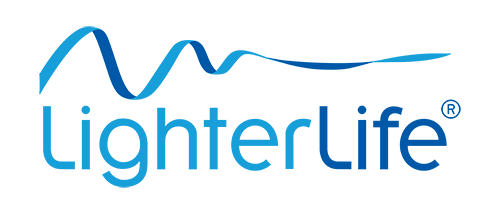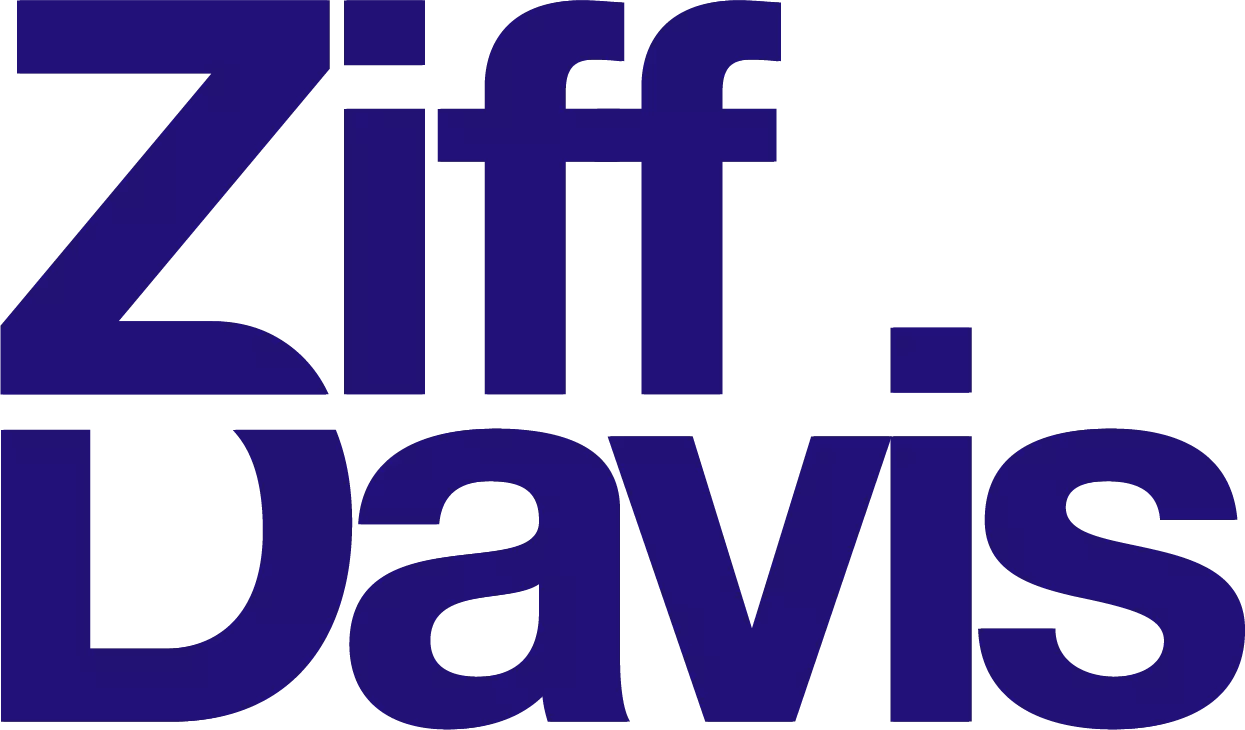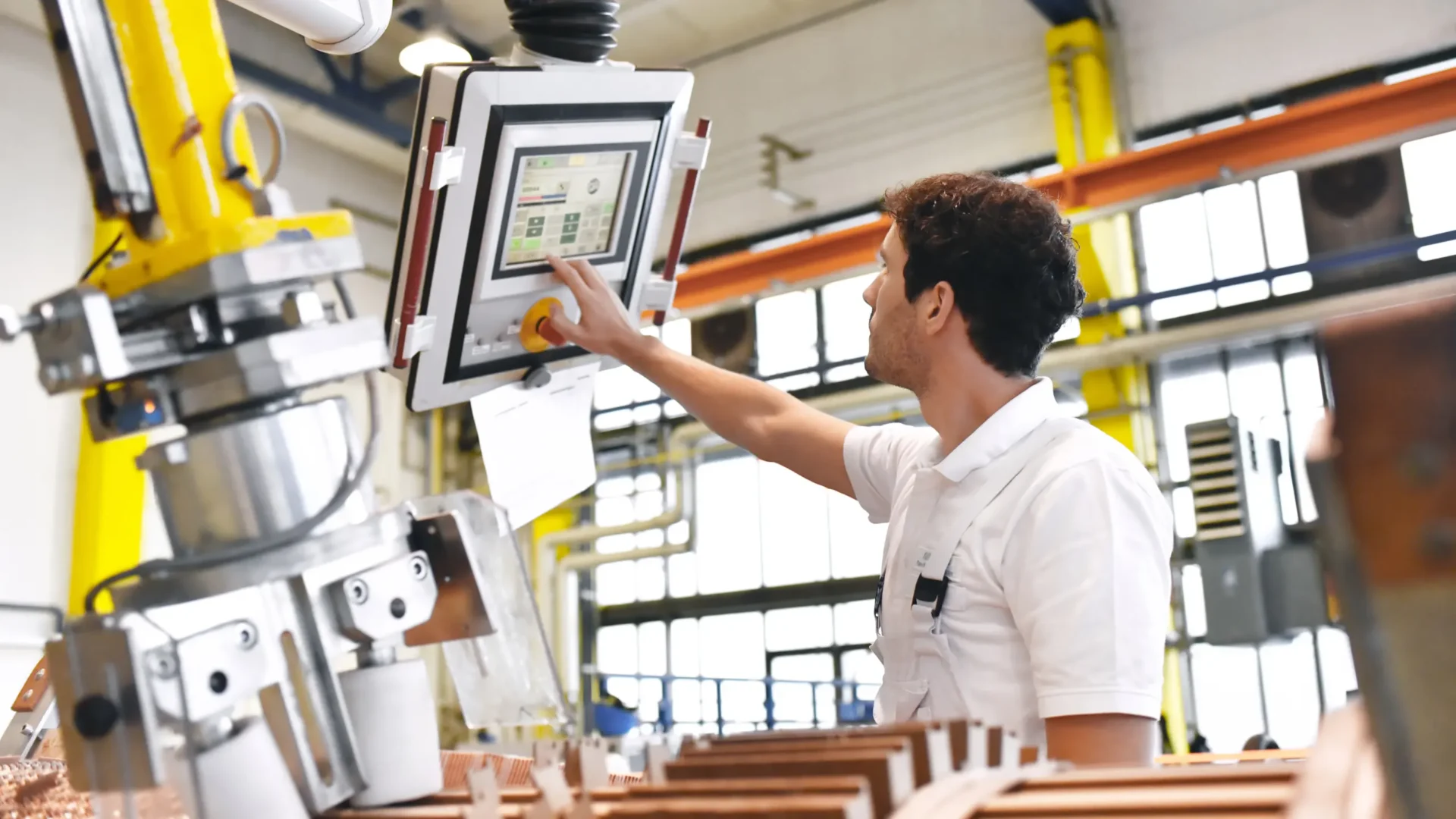
MLOps Consulting
We deliver scalable ML pipelines powered by enterprise-grade MLOps – covering everything from data engineering to deployment, monitoring, and governance. Built for reliability and aligned with your business goals, our solutions help you operationalize AI with confidence and drive value at scale.
Business Benefits of MLOps Consultation
MLOps. What can you expect from MLOps Consulting Services?
MLOps stands for Machine Learning Operations. This is the DevOps approach used for ML-based applications. MLOps is the main function of machine learning design and it aims to improve and optimize the process of implementing machine learning models into production, as well as their maintenance and monitoring.
MLOps helps businesses develop data science and implement high-quality ML models 80% faster
“AI and machine learning can transform the way business is done, but only if organizations can fundamentally reshape organization structures, cultures, and governance frameworks to support AI” – According to Jeff Butler, director of research databases at the Internal Revenue Service.
MLOps consulting services transform organizations by streamlining the entire machine learning lifecycle. These services deliver concrete advantages that impact both development speed and model effectiveness.
- Reduction in model deployment time from months to days through automated CI/CD pipelines
- Decrease in failed deployments by up to 75% with standardized testing and validation
- Automated model monitoring that detects performance degradation before it impacts business
- Version control for both code and data ensuring complete reproducibility of results
- Systematic experiment tracking that accelerates the path to optimal model performance
By implementing comprehensive MLOps practices, companies establish reliable, scalable machine learning operations that consistently deliver business value while eliminating the “model graveyard” of AI projects that never reach production.
Our approach bridges the critical gap between data science experimentation and production reliability. Rather than simply deploying isolated models, we craft comprehensive MLOps frameworks that transform your machine learning initiatives from academic exercises into production-grade systems that directly contribute to your bottom line.
Why choose Addepto for MLOps implementation?
Addepto is a dynamically growing company specializing in solutions based on artificial intelligence. We have experience in working on MLOps consulting projects for companies from various industries.
Some of our successful collaborations you can find on our profile on Clutch.
Team of experts
The Addepto team consists of professionals whose experience is market-proven by a strong portfolio of delivered MLOps projects.
Reliable solution
We are focused on your business needs first, and we make every effort to provide your company with a reliable, tailor-made solution within the agreed deadline.
Revolut: Preventing fraud and ensuring safe transactions with MLOps
Revolut is a well-known British company offering banking services to clients from various countries. MLOps plays an important role in securing user transactions and preventing fraud-related losses.
Sherlock system
This machine learning-based card fraud prevention system is used by Revolut to monitor user transactions. Whenever Sherlock detects a suspicious transaction, it automatically cancels the transaction and blocks the card.
Immediately the user receives a notification in the Revolut app to confirm whether the transaction was fraudulent. You can easily unblock your card by confirming a secure transaction and continuing with your purchase.
On the other hand, if you do not recognize the transaction, the card will be terminated and users can order a free card replacement.
How Revolut is deploying models to production
Revolut conducted training for production using Google Cloud Composer. Models are cached in memory to keep latency low and deployed as a Flask application.
Additionally, Revolut used an in-memory database dedicated to storing customer profiles called Couchbase.
The whole process can be described step by step:
1) After receiving a transaction via HTTP POST requests, Sherlock downloads the respective user and vendor profiles from Couchbase.
2) A feature vector is generated in order to produce training data and generate predictions.
3) The last step is sending a JSON response directly to the processing backend – that’s where a corresponding action takes place.
Monitoring model’s performance in production
For monitoring their system in production, Revolt used Google Cloud Stackdriver.
It shows data about operational performance in real-time.
If any issues arise, Google Cloud Stackdriver alerts team members by sending them emails and texts so that the fraud detection team can assess the threat and take appropriate action.
Uber: Data-driven decision making with MLOps solutions
Uber is the largest ride-sharing company worldwide.
Its services are available through the Uber mobile app, which connects users to the nearest drivers and restaurants.
Machine learning operations enable key functions such as estimating driver arrival time and determining the optimal toll based on user demand and driver supply.
Michelangelo platform
This platform is specifically designed to enable Uber teams to create, deploy, and maintain MLOps.
Michelangelo’s main goal is to cover the holistic machine learning workflow while supporting traditional models such as deep learning and time series forecasting.
The platform model goes from development to production in three steps:
1) Online forecasts in real-time.
2) Offline predictions based on trained models.
3) Embedded model deployment on mobile phones.
Moreover, the Michelangelo platform has useful features to track the data and model lineage, as well as to conduct audits.
How Uber is deploying models to production
The Uber model is being successfully transitioned from development to production via the Michelangelo platform thanks to Embedded Model Deployment and Online & Offline Predictions.
Online forecasting mode is used for models that make real-time forecasts.
Trained models are divided into multiple containers and run as clustered online predictive services.
This is crucial for Uber services that require a continuous flow of data with many different inputs, such as driver-drive pairing, etc.
Offline predictive models are particularly used to handle internal business challenges where real-time results are not required.
Models trained and deployed offline run batch forecasts when a recurring schedule is available or upon customer request.
If you want to know more about MLOps consulting solutions like this, please contact our experts.
Monitoring model’s performance in production
There are several ways Uber monitors countless models on a large scale through Michelangelo.
One is the distribution of forecasts and publishing of metrics functions over time to assist dedicated systems or teams in determining anomalies.
The second is to record the model’s predictions and analyze the insights provided by the data pipeline to determine whether the model-generated predictions are correct.
Another way is to use model performance metrics to evaluate the accuracy of the model.
Large-scale data quality can be monitored with the Data Quality Monitor (DQM). It automatically finds anomalies in data sets and runs tests to raise an alert on the platform responsible for data quality issues.
DoorDash: Optimizing the experience of dashers, merchants, and consumers with MLOps
DoorDash enables local businesses to offer deliveries by linking them with consumers seeking delivery and dashers who are delivery personnel.
This company implements MLOps solutions in order to optimize the experience of dashers, merchants, and consumers. Machine learning technology plays the biggest role within DoorDash’s internal logistics engine.
ML models enable running forecasts and based on them, determining the necessary supply of dashers while observing the demand in real-time.
Moreover, machine learning helps with estimating the time of delivery, dynamic pricing, offering recommendations to clients and search ranking of the best merchants available for DoorDash.
How DoorDash is deploying models to production
The DoorDash team develops machine learning models to meet their production or research needs. They often use open source machine learning platforms such as PyTorch (tree-based models) and LightGBM (neural network models).
DoorDash uses the ML wrapper in the training pipeline. The metadata and files are then added to the model store, waiting to be loaded with the microservice architecture.
Sibyl, a specially designed prediction service, is responsible for providing output data to various use cases. The model service enables them to load models and cache them in memory.
When there is a forecast request, the platform tests to see if any features are missing, and if so, delivers them from the feature store. Predictions can be made available in a variety of ways, in real-time, in shadow mode, or asynchronously.
Responses obtained by forecasts are sent back to the user as a protobuf object in gRPC format. Additionally, forecasts are logged in the Snowflake datastore.
Monitoring model’s performance in production
The monitoring service used by the company tracks the forecasts provided by Sybilla to monitor model metrics. Additionally, the service analyzes feature distribution to monitor data drift as well as a log of all forecasts generated by the service.
To collect and aggregate monitoring statistics, as well as generate metrics that need to be watched, DoorDash uses the Prometheus monitoring platform.
To visualize this data in graphs and charts, the company uses Grafany.
How MLOps Consulting Services can impact the business?
1. Continuous Model Improvement
Automatically retrains models when performance drops, ensuring they stay accurate as customer behavior or market conditions evolve.
Business impact: Maintains prediction quality over time, driving better decisions and protecting revenue.
2. Model Deployment at Scale
Provides infrastructure to manage and monitor hundreds of models consistently across teams, products, or regions.
Business impact: Enables enterprise-wide AI adoption, increases operational efficiency, and reduces duplication of effort.
3. ML-Specific Monitoring
Tracks not just system metrics but model-specific indicators like data drift or performance degradation.
Business impact: Detects issues early, avoids customer-impacting failures, and ensures models remain trustworthy and effective.
4. Regulatory Compliance Automation
Generates documentation, audit trails, and bias reports automatically to meet evolving legal and ethical standards.
Business impact: Reduces compliance costs, mitigates regulatory risk, and accelerates time-to-market for AI solutions.
5. CI/CD for Machine Learning
Implements automated pipelines to test and deploy models reliably, ensuring only high-quality versions reach production.
Business impact: Increases delivery speed, reduces human error, and supports rapid iteration in response to business needs.
MLOps risk management
Our MLOps approach embeds risk management, regulatory compliance, and governance directly into the machine learning lifecycle—ensuring that models are not only powerful, but also safe, transparent, and ready for real-world scrutiny. This integrated strategy enables rapid AI development without compromising oversight or accountability.
Key risk management capabilities:
- Model Lineage Tracking – Every input, parameter, and decision point is recorded, providing full traceability throughout the model’s lifecycle.
- Automated Bias Detection – Built-in safeguards monitor for unfair or discriminatory behavior, reducing ethical risk and supporting equitable outcomes.
- Model Explainability Tools – Complex model decisions are translated into clear, understandable insights for stakeholders, regulators, and end users.
- Approval Workflows – Structured review and validation processes ensure models meet governance standards before deployment.
- Full Audit Trails – The entire model lifecycle is automatically documented—simplifying compliance reviews and enabling defensible reporting.
Clients that trusted us





















MLOps implementation process
Team integration
One of the keys to a successful project is building a professional team.
The number of machine learning engineers, data engineers, and DevOps engineers required is always determined by the complexity and requirements of the project.
ETL step
It is essential to extract data from all sources and create a pipeline that will ensure uninterrupted data extraction in the system.
Version control
You can change various parameters when running a model. And this, in turn, leads to different results.
Therefore, version control allows you to revert to the previous parameter set if necessary.
Testing
Model testing involves checking for bad rates, accuracy, ROC, area under the curve, population stability index (PSI), characteristic stability index (CSI), etc.
Monitoring
An integral step in MLOps consulting projects – periodic monitoring of machine learning model performance.
Why work with us
AI Experts on board
Finished projects
We are part of a group of over 200 digital experts
Different industries we work with

Recognitions & awards



Technologies that we use
MLOps Services in Various Industries: Use Cases

MLOps for Manufacturing
Manufacturers implement MLOps for predictive maintenance, quality control, and process optimization.
Automated data pipelines and model management minimize equipment downtime, improve product quality, and enable rapid adaptation to changing production requirements, resulting in significant cost savings and increased productivity.
Check how we implemented Product Traceability in Manufacturing

MLOps for Healthcare
MLOps streamlines the deployment and continuous improvement of machine learning models used for diagnostics, patient outcome prediction, and medical imaging.
Automated pipelines ensure models are regularly updated with new data, improving diagnostic accuracy and accelerating clinical decision-making while maintaining compliance and data security.

MLOps for Retail & E-commerce
Retailers and e-commerce leaders use MLOps to power demand forecasting, fraud detection, and hyper-personalized recommendations.
Automated model retraining and deployment enable real-time inventory optimization, efficient logistics, and tailored customer experiences, driving higher sales and operational efficiency.

MLOps for Logistics
Financial institutions rely on MLOps to deploy and monitor fraud detection models, credit risk scoring, and anti-money laundering systems.
Continuous model updates and robust monitoring help identify suspicious activities in real time, reduce fraud, and ensure regulatory compliance, ultimately protecting both institutions and customers

MLOps for Education
MLOps empowers educational institutions to automate the end-to-end machine learning lifecycle, from model development to deployment and monitoring.
This leads to faster implementation of AI-driven learning tools, ensures consistency across different environments, and enables educators to rapidly adapt models to evolving curriculum needs—ultimately enhancing personalized learning and operational efficiency.

MLOps for Energy
Energy and utility companies leverage MLOps to automate inspection analysis, optimize energy production, and predict equipment failures.
By integrating real-time data from sensors and drones, MLOps enables faster, safer, and more accurate decision-making, supporting sustainability and operational efficiency.

MLOps for Manufacturing
Manufacturers implement MLOps for predictive maintenance, quality control, and process optimization.
Automated data pipelines and model management minimize equipment downtime, improve product quality, and enable rapid adaptation to changing production requirements, resulting in significant cost savings and increased productivity.
Check how we implemented Product Traceability in Manufacturing

MLOps for Healthcare
MLOps streamlines the deployment and continuous improvement of machine learning models used for diagnostics, patient outcome prediction, and medical imaging.
Automated pipelines ensure models are regularly updated with new data, improving diagnostic accuracy and accelerating clinical decision-making while maintaining compliance and data security.

MLOps for Retail & E-commerce
Retailers and e-commerce leaders use MLOps to power demand forecasting, fraud detection, and hyper-personalized recommendations.
Automated model retraining and deployment enable real-time inventory optimization, efficient logistics, and tailored customer experiences, driving higher sales and operational efficiency.

MLOps for Logistics
Financial institutions rely on MLOps to deploy and monitor fraud detection models, credit risk scoring, and anti-money laundering systems.
Continuous model updates and robust monitoring help identify suspicious activities in real time, reduce fraud, and ensure regulatory compliance, ultimately protecting both institutions and customers

MLOps for Education
MLOps empowers educational institutions to automate the end-to-end machine learning lifecycle, from model development to deployment and monitoring.
This leads to faster implementation of AI-driven learning tools, ensures consistency across different environments, and enables educators to rapidly adapt models to evolving curriculum needs—ultimately enhancing personalized learning and operational efficiency.

MLOps for Energy
Energy and utility companies leverage MLOps to automate inspection analysis, optimize energy production, and predict equipment failures.
By integrating real-time data from sensors and drones, MLOps enables faster, safer, and more accurate decision-making, supporting sustainability and operational efficiency.
Why should your company invest in MLOps consulting?
Accelerated Innovation and Time-to-Value
By automating model deployment, MLOps enables your business to launch new data-driven products and features faster, gaining a competitive edge and responding quickly to market opportunities.
Cost Efficiency and Scalable Growth
MLOps streamlines resource management, allowing you to scale AI initiatives without ballooning operational costs – maximizing ROI as your business and data needs grow.
Consistent Quality and Risk Reduction
Continuous monitoring and maintenance ensure your AI solutions remain accurate and compliant, reducing business risks associated with outdated models, regulatory breaches, or operational failures.
Stronger Team Collaboration and Productivity
MLOps fosters cross-functional teamwork and standardized processes, breaking down silos between departments and enabling your teams to deliver high-impact AI solutions more efficiently.
Competitive Advantage
Differentiate your business by leveraging AI capabilities that position you at the forefront of innovation in your industry. Our solutions help you create personalized customer experiences, accelerate product development, and build intelligent products and services that set you apart from competitors.
Greater Transparency and Auditability
MLOps provides detailed tracking and documentation of model versions, data sources, and decision processes, making it easier to meet regulatory requirements and respond to audits. This transparency builds trust with stakeholders and simplifies compliance in highly regulated industries
All you need to know about MLOps consulting
What are the main principles of MLOps?
MLOps is a set of methods and practices for collaboration between data specialists and operational specialists. These practices are needed to optimize the machine learning lifecycle from start to finish. They serve as a bridge between the stages of design, model development and operation.
Adopting MLOps helps improve the quality, automate the management process, and optimize the implementation of machine learning and deep learning models in large-scale production systems.
What are the benefits of MLOps?
The main benefits of MLOps include automatic update of multiple pipelines, scalability and management of machine learning models, easy deployment of high-precision models, lower cost of repairing errors, and growing trust and the opportunity to receive valuable insights.
What is the MLOps process?
The MLOps process is as follows:
- Defining machine learning problems based on business goals.
- Searching for suitable input data and ML models.
- Data preparation and processing.
- Training machine learning model.
- Building and automating ML pipelines.
- Deploying models in a production system.
- Monitoring and maintaining machine learning models.
Who needs MLOps?
The usefulness of MLOps models comes from the fact that they are necessary to optimize the process of maturing AI and ML projects in the company. With the development of the machine learning market, it has become extremely valuable to effectively manage the entire life cycle of machine learning.
As a result, MLOps practices are required for many professionals, including: data analysts, IT leaders, risk and compliance specialists, data engineers, and department managers.
What are MLOps open source tools?
There are many open-source tools to choose from. MLflow, Kubeflow, ZenML, MLReef, Metaflow, and Kedro are among the best full-fledged machine learning platforms for data research, deployment, and testing.
How is MLOps different from DevOps?
In MLOps, in addition to code testing, it is also important to ensure that data quality is maintained throughout the machine learning project life cycle.
In MLOps, the machine learning pipeline may be needed to implement a machine learning system that includes data extraction, data processing, function construction, model training, model registry, and model deployment.
Continuous Learning (CT) is the third MLOps concept that DevOps does not have. This concept focuses on the automatic identification of different scenarios.
In addition, MLOps vary in team composition, testing, automatic deployment, monitoring, and so on.
What are the main challenges or pain points in MLOps?
Common challenges include managing version control for data and models, ensuring reproducibility, automating deployment, scaling ML systems, and monitoring models in production.
How will MLOps transform your machine learning capabilities?
Our MLOps expertise spans the entire machine learning lifecycle, from data preparation to continuous monitoring and improvement. We architect solutions that address every phase of ML development and deployment with specialized tools and practices.
- Data validation pipelines that ensure quality inputs for both training and inference
- Experiment tracking systems that maintain complete records of model development
- Containerized deployment ensuring consistent behavior across environments
- A/B testing frameworks for controlled evaluation of model performance
- Automated monitoring alerting teams to performance issues before users notice
This comprehensive approach enables us to deliver solutions that transform machine learning from brittle, one-off projects into reliable, continuously improving production systems that consistently deliver business value.
- Data engineering mastery with tools like Apache Spark, Kafka, Airflow, and Databricks
- Cloud-native development across AWS, Azure, and GCP environments
- Computer vision implementations for quality control and security applications
- NLP systems for document processing, sentiment analysis, and text generation
- End-to-end integration that combines multiple technologies into cohesive systems
This technological foundation enables us to deliver solutions that address complex business challenges through carefully orchestrated combinations of AI capabilities working in harmony.

Check out our other services
Subscribe to our newsletter
Get the latest AI insights and be invited to our digital sesscions






